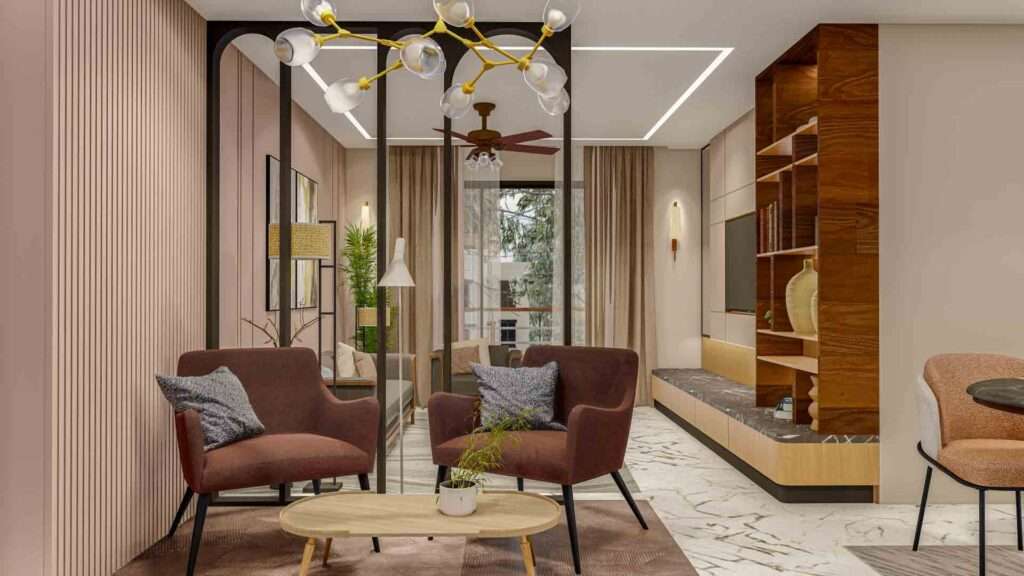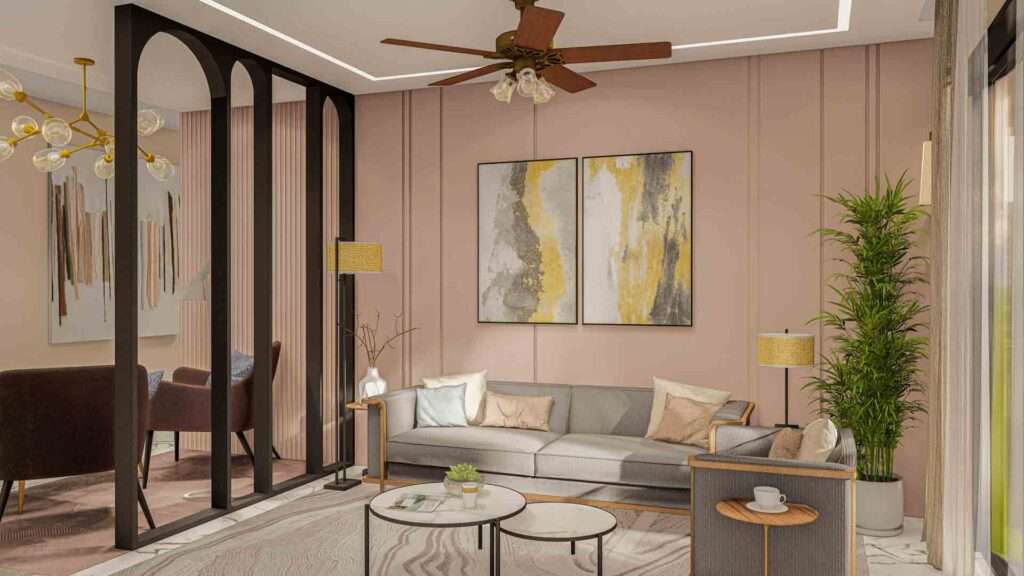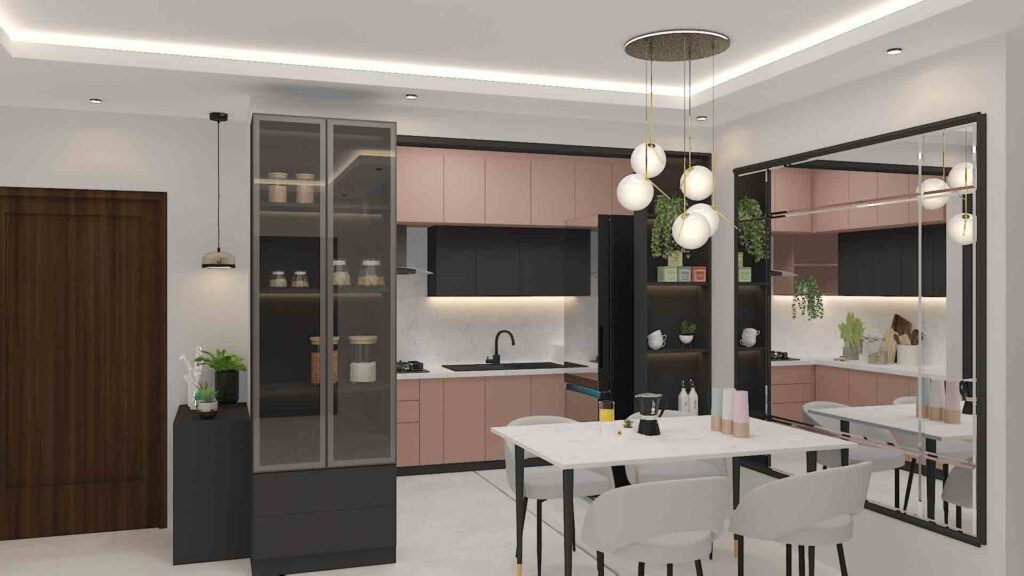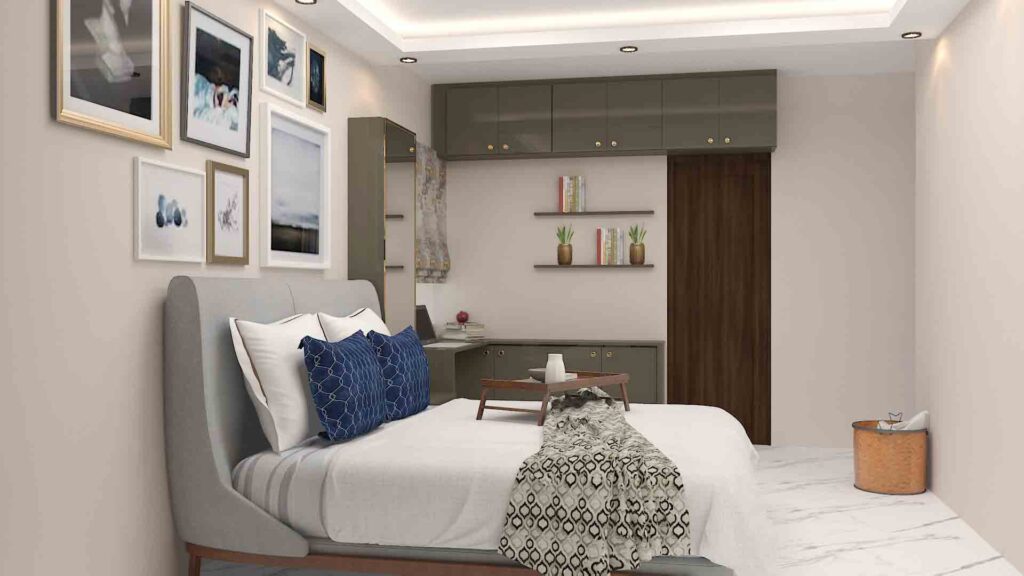
Why Interior Design is Important?
You enter your home, you see stained floor and walls, paintings dangling, uneven colour theme, and you open a shelf door, but surprise the whole unit falls off. You are hungry, but oh you are juggling with the dishes. You open your wardrobe and oops! All your clothes are on the floor. Just imagining this scene makes you feel annoyed right? This is when you know the role of an interior designer.
Now, imagine you enter a room and you feel calm and relaxed. This is because the natural light and tidiness of the space. Research studies show that a clutter-free space reduces stress, anxiety and boosts mood, self-esteem promoting feel-good hormones.
What is Interior Designing?
Interior Design is simply the beautification of space balanced with functionality. Interior Designing is how we experience spaces, enrich it with elements that reflect our personality. It is the art and science of enhancing the interior of rooms and buildings to create environments that are healthier, safer, and aesthetically pleasing. Interior Designing is a multidisciplinary profession that integrates knowledge of architecture, graphic design, furniture, textile and lighting.
How does Interior Design impact Human Well-being?
Interior design significantly impacts the mental and physical well-being of humans. The arrangement of the space, colour and furniture influences the way we feel, think, and behave. An orderly space can positively influence our focus and productivity which results in peace and overall well-being.
Here are the benefits of interior design,
1.Functionality and Efficiency

Functionality and Efficiency with a pleasing design go hand-in-hand. One without the other is no job done with zero practicality. Based on your specific needs and lifestyle, tailor the design accordingly to serve its purpose. Efficient space planning means creating distinct areas for various activities while allowing easy movement throughout the space without any hindrances. It includes placing furniture thoughtfully to encourage a natural flow and multi-functional furniture to maximize space, particularly in compact rooms. A thoughtfully designed space supports everyday life by being both inviting and highly functional, without feeling crowded or cluttered. A thoughtful theme, smart storage, colourful ambience and the vibe that suits you, an interior designer gets into your shoe to frame the sections of your house together to make it a home you love.
2.Aesthetics and Visual Comfort

Going back after a long day only to see a beautifully kept home is simply visually pleasing and comforting. Aesthetics and Visual Comfort are fundamental aspects of interior design that sway the way we feel and the space functions. Selection and arrangement of colours, forms, textures, and patterns to curate a beautiful ambience contribute to the aesthetic of the space. While visual comfort focuses on lighting, natural or artificial, that is visually soothing and not too harsh on our eyes. Together, these elements ensure a comfortable living.
3.Enhanced Productivity and Creativity

A messy place sabotages creativity and productivity. Imagine an organized space vs a chaotic one. Which makes you feel nicer? A design is an inculcation of colours, furniture, texture, tones, and pieces of aesthetics. As we all know, nature heals. Having plants around gives you a sense of peace. Ergonomic furniture reduces physical strain, allowing individuals to work longer and more comfortably. Light is another important aspect of a space. Natural light is emphasized as it regulates circadian rhythms, improves mood, and enhances alertness, while well-planned artificial lighting prevents eye strain. Colour choices influence productivity and creativity; calming blues and greens help concentration, while energizing yellows and oranges stimulate innovative thinking. Overall, interior design crafts spaces that enhance work efficiency while also sparking creativity and encouraging innovative ideas.
4.Space Optimization

The strategic process of arranging and utilizing available areas to maximize functionality, comfort, and appearance is Space Optimization. It is creating designated zones as per requirements. This includes the living area, dining, kitchen, bedroom, and so on. Incorporating multifunctional furniture and smart storage makes the most of limited space, especially ones with space constraints. Vertical space is leveraged through tall shelves or wall-mounted storage to free up floor area and maintain an open feel. Effective space optimization balances scale and proportion to avoid overcrowding or emptiness, ensuring the environment feels harmonious and inviting.
5.Personal Expression and Well-Being

Interior Design is a powerful means of expressing oneself, which, in turn, affects the mind-set of the individual. The colours, textures, placement of elements, and creating the perfect ambiance that defines your style and personality give a sense of satisfaction. This personal expression not only nurtures emotional stability but also fosters mental health by making environments feel safe, inviting, and uplifting. The decor that resonates with the individual’s taste and values becomes a reflection of who they are, while evoking a sense of belongingness.
In conclusion, interior design is far more than decorating a space- it’s about creating and nurturing environments that enhance our quality of life in meaningful ways. Choosing a designer who gets on par with your ideas and presentation is very important. From boosting productivity and supporting well-being to reflecting personal style and optimizing functionality, thoughtful design shapes how we live, work, and connect with our surroundings. Whether it is a cozy home or a dynamic office, a good interior design transforms ordinary rooms into inspiring places that foster ease, innovation, and positivity. Investing in interior design is investing in a better, more balanced, and fulfilling life. Invest your trust in Grham Interiors and receive the valuable gift of your life, the Gift of Magical Interiors.